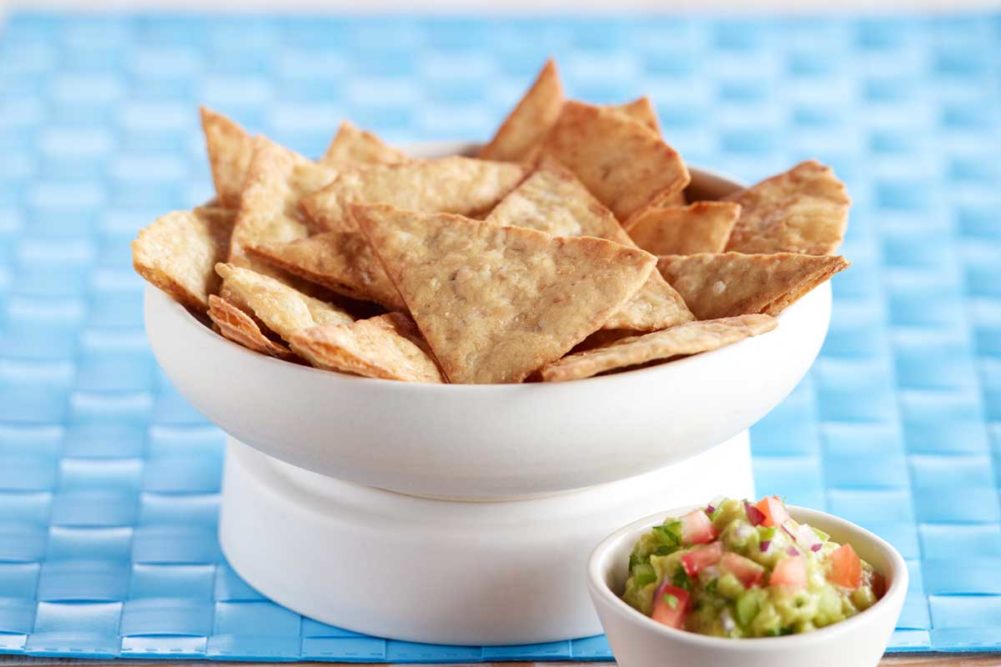Dietary fiber intake in the United States has been at alarmingly low levels for a long time. And now, with the increased popularity of high-protein, low-carbohydrate diets, the gap between recommended and actual intakes remains large.
Many grains innately come with some fiber and can be bred to contain more. Different ingredients from grains can also boost the fiber content of a baked food.
Bay State Milling supplies a refined high-fiber wheat flour that delivers more than 10 times the dietary fiber of traditional refined wheat flour.
“Because of the increased resistant starch content, this flour contains at least 30% dietary fiber, which is a significant increase compared to the 2% dietary fiber found in traditional refined wheat,” said Katie Harris, product development and nutrition scientist, Bay State Milling Co. “It is made from high-amylose wheat varieties and processed just like traditional wheat. It’s labeled as ‘wheat flour’ and is considered an intact and intrinsic dietary fiber.”
When a product developer replaces as little as 25% of the typical refined wheat flour in a formula with high-fiber wheat flour, it is possible to achieve a “good source of fiber” claim with no alterations in formulation or processing other than a slight increase in water absorption.
“This is true particularly for tortilla applications, where high-fiber wheat flour can provide exceptional functionality benefits in addition to the nutritional benefit of dietary fiber,” Ms. Harris said. “The result is a product that looks and tastes like it was made with traditional refined wheat flour but has a superior dietary fiber content.”
Ardent Mills markets proprietary, identity-preserved high-fiber barley. The beta-glucan in the barley provides fiber functionality two ways. It builds viscosity and is fermentable, said Sumana Chakrabarti-Bell, principal scientist, research, quality and technical team.
Labeled simply as “barley,” the ingredient can thicken fillings as well as impart texture and visual appeal to multigrain products. It’s available in fine flour, flakes and steel-cut forms for use in extruded snacks, chips, cereals and crackers.
“In cracked and flaked forms, grains can offer a toothy bite to any application, while at the same time delivering visual distinctiveness that many of today’s consumers find appealing,” said Don Trouba, senior director of the go-to market at The Annex by Ardent Mills.
In an environment where the emphasis is on simple, wholesome ingredients, corn bran, which comes directly from corn, is an easy-to-understand fiber ingredient. Listed simply as “corn bran” on the label, it is considered a source of intact and intrinsic dietary fiber and is 86% total dietary fiber.
“In baked goods, corn bran can help with sugar reduction,” said Keith Smith, regional technical service lead at Cargill. “Using finely ground corn bran in combination with a few other ingredients, we’ve replaced as much as 25% of the sugar in a nutrition bar.”
MGP Ingredients markets resistant wheat starch compatible with conventional wheat flour. When enough is incorporated into white pan bread to make an “excellent source of fiber” claim, the bread shows increased loaf volume.
“The proofed strength and appearance of the dough looked identical to the control dough,” said Ody Maningat, chief science officer, MGP Ingredients. “Baking time is the same as the control and the finished bread product has higher loaf volume, but similar texture and eating quality as the control bread.”
In its hydrated form, resistant wheat starch absorbs twice its weight of water and assumes a smooth fat-like texture. It can partially or totally replace fat or oil in baked products, said Mike Buttshaw, vice president of ingredients sales, marketing and research and development at MGP Ingredients. It is compatible with flour-based baked products, so there will be no impact on taste and texture profile.
“Resistant wheat starch is convenient to use as one-to-one replacement of wheat flour,” Mr. Buttshaw said. “It has low water-holding capacity, which is similar to wheat flour, so there is no need to adjust water absorption. There are also no special processing considerations.”
Getting more fiber in the American diet has always been a challenge.
“Going forward, the challenge to bakers will be to find ways to serve up new and exciting products to consumers who may be scanning the ingredient panel for fiber content,” noted JoAnn Rupp, global market insights manager, Corbion.
This article is an excerpt from the March 2020 issue of Baking & Snack. To read the entire feature on fiber, click here.





